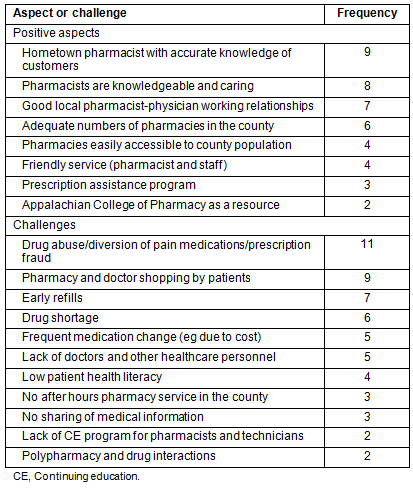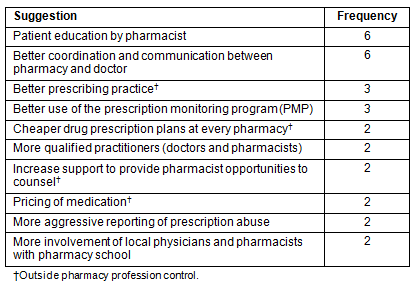Buchanan County in Southwest Virginia is the poorest county in Virginia and is one of the 100 poorest counties in the USA1. In 2009, about 19% of the Buchanan County families lived below poverty level, compared with 9.9% of the United States average, and the County poverty rate was almost twice the national average2. In 2009, the median household income in Buchanan County was US$27,538, which was lower than the national average of $51,4252. Many Buchanan County residents (population=24 098 in 2010) do not graduate from high school and only 8.9% of the population aged 25 years or older have attended college compared with a national average of 27.5%2.
The people living in Southwest Virginia, which includes Buchanan County, have poorer health outcomes compared to the rest of the state and nation3. More people in Southwest Virginia smoke and are obese compared to the rest of the state4. About 32.4% to 34.7% of the adults in Buchanan, Dickenson and Wise Counties were obese in 20105. Appalachian residents have higher rates of heart disease, diabetes and cancer than the state and national average3,6,7.
Although the health, economic and social problems facing Buchanan County have been documented, little is known about the main challenges facing the pharmaceutical sector in Buchanan County, a predominantly rural county in Central Appalachia. The pharmaceutical sector is defined in this study as encompassing all health concerns and services connected to pharmacy or related to the dispensing, distribution, education and use of medicines. Therefore, the aim of this pilot study is to come up with a list of the main challenges facing the pharmaceutical sector and suggestions for improving the sector in Buchanan County, Virginia. The specific objectives of the study are to:
- determine the main positive aspects/features of the pharmaceutical sector in Buchanan County
- determine the main challenges or shortcomings facing the pharmaceutical sector in Buchanan County
- determine healthcare professionals' suggestions to improve the pharmaceutical sector in Buchanan County.
Delphi Interview Technique
This study is based on the first step of the Delphi Interview Technique (DIT) or the Delphi method8. The DIT is a method used to collect and survey the opinions of experts in a particular subject especially when comprehensive information is unavailable. The DIT is a good method for building consensus and has been used in several medical and pharmacy research studies in the past9-12. Typically, the Delphi method uses a multi-stage process.
This cross-sectional study used a drop-by survey based on the first step of the Delphi method8. Although typically the Delphi method uses a multi-stage process, this study only utilized the first step of the Delphi method. A convenience sample of pharmacists, nurses, doctors and pharmacy technicians practicing in Buchanan County served as a 'panel of experts'. Data were collected between May and August 2011 using a two-paged survey instrument designed for the study. Researchers visited all doctors' offices, pharmacies, a hospital, a school of pharmacy and a nursing home in the County and invited all healthcare professionals present to participate in the study. A cover letter explaining the purpose and objectives of the study together with a copy of the questionnaire were handed in person to each healthcare professional who consented to participate in the study.
The survey instrument had 12 items consisting of two sections. The first section had four items comprising questions that asked respondents to identify the three most pressing challenges facing the healthcare sector in the County, the five main positive aspects/features of the pharmaceutical sector in the County, the 10 main challenges facing the pharmaceutical sector in the County, and what can be done to improve the pharmaceutical sector in the County.
In the second section, the survey gathered respondents' demographic factors as follows: gender (male or female), marital status (married, divorced, not married, or other), profession (pharmacist, medical doctor, nurse, or other), the current job title, years practicing or working in the County, specialty, the type of practice setting for primary place of employment (community, hospital, or other) and other comments about the pharmaceutical sector in Buchanan County.
All data were input to Microsoft Excel 2007 for analysis. Frequencies and descriptive statistics were computed for all study variables. The number of times each aspect was mentioned by the respondents was counted and a tally made for each item. The tallies were then presented in a frequency table.
A total of 16 healthcare professionals comprising six pharmacists, four doctors, three nurses and three pharmacy technicians completed the survey. The respondents had worked for an average of 13.4 (SD=10.7) years in the County (range: 1-33 years). Most respondents were female (n=10, 62.5%) and were married (n=15), and half practiced in the community setting (n=8).
Positive aspects of the pharmaceutical sector
The respondents identified many positive aspects of the pharmaceutical sector in the County (n=34). The most commonly cited positive aspects include 'hometown pharmacist with accurate knowledge of customers' and 'pharmacists are knowledgeable and caring' (Table 1).
Table 1: Main positive aspects of and challenges
facing the pharmaceutical sector in Buchanan County, VA

Main challenges facing the pharmaceutical sector
The main challenge facing the pharmaceutical sector in Buchanan County is drug abuse (ie 'drug abuse/diversion of pain medications/prescription fraud'). Other main challenges cited by healthcare professionals include 'pharmacy and doctor shopping by patients', 'early refills' and 'drug shortage' (unavailability of medications such as alternative generic medications) (Table 1).
Suggestions for improving the pharmaceutical sector
Pharmacists suggested several strategies for improving the pharmaceutical sector in Buchanan County. The most cited suggestions were more 'patient education by pharmacist' (n=6), 'better coordination and communication between pharmacy and doctor' (n=6), 'better prescribing practice' and 'better use of the prescription monitoring program' (PMP), among others (Table 2).
Table 2: Suggestions to improve the pharmaceutical sector in Buchanan County, VA

Discussion
This study is the first to come up with a list of the challenges facing the pharmaceutical sector in Buchanan County. The main pharmacy challenge cited by the respondents is drug abuse/prescription fraud. Although drug abuse is a national problem, this problem is greater and is increasing at a faster rate in Appalachia than the rest of the nation13. Many people in the County are addicted to oxycodone. The neighboring state of Kentucky has the highest non-medical use of prescription drugs in the nation14. The prevalence of the drug abuse problem in the County can be explained by low education, low incomes and little stigma associated with prescription drug abuse in the region. In addition, a high use of alcohol, high social acceptability of substance abuse and high rates of occupational injury also account for the drug abuse problem15. Although it is challenging, healthcare professionals practicing in the County and local law enforcement officials should double their efforts to combat this problem. In addition, better coordination between pharmacists and doctors and increased use of the PMP may help to reduce the drug abuse problem in the County.
The second most pressing challenge cited by the respondents was doctor shopping by patients. Many patients in the County request care from multiple doctors simultaneously without informing their physicians. Doctor shopping may be fuelled by drug abuse and prescription drug addiction. Many drug abusers also attempt early re-fills of their medicines, a major problem also identified by study participants. Concerted efforts are required to reduce doctor shopping. Physicians and pharmacists should use PMPs to identify patients who obtain drugs from multiple sources. PMPs are systems designed to collect data on controlled substance prescriptions dispensed in community pharmacies for the purposes of decreasing drug diversion and abuse. Most states in the United States, including Virginia, have active PMPs. However, states do not share databases and most PMPs do not cover all scheduled medications.
Another major problem highlighted by the respondents is drug shortage. Respondents noted that several medicines were unavailable or were on backorder and that many alternative generic medications were not available. It is not clear why this was so given there are many pharmacies (n=7), including a chain pharmacy (Rite Aid), in the County. This problem may result in sub-optimal patient care in the County and should be addressed urgently.
Respondents suggested 10 ways to improve the pharmaceutical sector in Buchanan County. Six of the these ways can be addressed by the pharmacy profession (pharmacists, pharmacy schools and pharmacy accreditation bodies). However, the pharmacy profession has limited control over four of these 10 ways, namely, better prescribing practice, better drug prescription drug plans at every pharmacy, increased support to provide pharmacist with opportunities to counsel, and pricing of medicines. The most cited suggestion to improve the pharmaceutical sector in the County was more education of patients by pharmacists. It is of critical importance that pharmacists talk to, counsel and educate patients on their medications, on how to get financial help and on substance abuse.
This study is limited by the small sample size of 16 healthcare professionals, which does not include all of the healthcare professionals practicing in the County. Therefore, the results from this sample may not be representative of the entire County population.
Drug abuse, pharmacy and doctor shopping, early refills and drug shortage are the main challenges facing the pharmaceutical sector in Buchanan County. Healthcare professionals in Buchanan County should double their efforts in addressing these challenges. More research on this subject is needed.
References
1. United States Census Bureau. Small area income and poverty estimates: State and County estimates for 2009. Available: http://www.census.gov/did/www/saipe/data/statecounty/data/2009.html (Accessed 23 October 2012).
2. US Census Bureau. 2005-2009 American Community Survey 5 year estimates. (Online) 2010. Available: http://factfinder.census.gov/servlet/ACSSAFFFacts?_event (Accessed 23 October 2012).
3. Appalachian Regional Commission. Economic assessment of Appalachia: An Appalachian regional development initiative report. Washington, DC: Appalachian Regional Commission, 2010.
4. Appalachian Ohio Healthy Living Task Force. Report to the Governor on addressing obesity in Appalachian Ohio: final report. Athens, OH: Ohio University, 2006.
5. Healthy Appalachia Institute. Health conditions. (Online) 2010. Wise, VA: The University of Virginia's College at Wise. Available: http://www.healthyappalachia.org/health-conditions (Accessed 1 April 2012)
6. Yabroff KR, Lawrence WF, King JC, Mangan P, Washington KS, Yi B et al. Mortality: What Are the Roles of Risk Factor Prevalence, Screening, and Use of Recommended Treatment? Journal of Rural Health 2005; 21(2): 149-157.
7. Centers for Disease Control and Prevention (CDC). Cancer death rates - Appalachia, 1994-1998. Morbidity and Mortality Weekly Report (MMWR) 2002; 51(24): 527-529.
8. Linstone HA, Turoff M. General application. In: HA Linstone, M Turoff (Eds). The Delphi method: technique and applications. Reading, MA: Addison-Wesley, 1975; 73-226.
9. Kilroy DA, Mooney JS. Determination of required pharmacological knowledge for clinical practice in emergency medicine using a modified Delphi technique. Emergency Medicine Journal 2007; 24(9): 645-647.
10. McBride AJ, Pates R, Ramadan R, McGowan C. Delphi survey of experts' opinions on strategies used by community pharmacists to reduce over-the-counter drug misuse. Addiction 2003; 98(4): 487-497.
11. Vernon W. The Delphi technique: a review. International Journal of Therapy & Rehabilitation 2009; 16(2): 69-76.
12. Wilson S, Moffat M. Using a Delphi survey to identify priorities. British Journal of Healthcare Management 2010; 16(6): 284-289.
13. Bishop B. As poverty worsens in Appalachia, so do drug abuse and depression. Daily Yonder, 14 August 2008. Available: http://www.dailyyonder.com/poverty-worsens-appalachia-so-do-drug-abuse-and-depression (Accessed 23 October 2012).
14. Burgin S. WLKY investigates: Why KY ranks no. 1 in drug abuse: Commonwealth leads nation in prescription drug abuse 2009. (Online) 2009. Available: http://www.wlky.com/r/21499985/detail.html (Accessed 2 November 2009).
15. Reach of Louisville. Substance abuse in Appalachia 2011. (Online) 2011. Louisville, KY: Reach of Louisville. Available: http://www.reachoflouisville.com/SIG/Appalachia.pdf (Accessed 23 October 2012).


